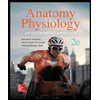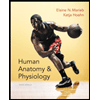Internal respiration During internal respiration, the small amount of oxygen transported in dissolved plasma (1) quickly diffuses out of the plasma into interstitial fluid. • Carbon dioxide diffuses into the blood and a small amount remains dissolved in the plasma (2). Most of the carbon dioxide continues into the red blood cell where some of it combines with hemoglobin (3) to form carbaminohemoglobin (4). Most carbon dioxide, however, combines with water (5) to form carbonic acid (6). This reaction is catalyzed by carbonic anhydrase. The carbonic acid then dissociates into hydrogen and bicarbonate ions (7). As bicarbonate ion concentration inside the red blood cell increases, bicarbonate ions diffuse out of the red blood cell into plasma (8) in exchange for chloride ions (9). Bicarbonate ions act as buffers within the plasma, controlling pH. • Within the red blood cell, hydrogen ions (10) are buffered by hemoglobin (11). When hemoglobin binds hydrogen ions, it has a lower affinity for oxygen. As a result, oxygen dissociates from hemoglobin (12), diffuses out of the red blood cell and out of the blood, down its pressure gradient. The interaction between hemoglobin's affinity for oxygen and its binding of hydrogen ions is called the Bohr effect. By forming hydrogen ions, carbon dioxide loading facilitates oxygen unloading.
Internal respiration During internal respiration, the small amount of oxygen transported in dissolved plasma (1) quickly diffuses out of the plasma into interstitial fluid. • Carbon dioxide diffuses into the blood and a small amount remains dissolved in the plasma (2). Most of the carbon dioxide continues into the red blood cell where some of it combines with hemoglobin (3) to form carbaminohemoglobin (4). Most carbon dioxide, however, combines with water (5) to form carbonic acid (6). This reaction is catalyzed by carbonic anhydrase. The carbonic acid then dissociates into hydrogen and bicarbonate ions (7). As bicarbonate ion concentration inside the red blood cell increases, bicarbonate ions diffuse out of the red blood cell into plasma (8) in exchange for chloride ions (9). Bicarbonate ions act as buffers within the plasma, controlling pH. • Within the red blood cell, hydrogen ions (10) are buffered by hemoglobin (11). When hemoglobin binds hydrogen ions, it has a lower affinity for oxygen. As a result, oxygen dissociates from hemoglobin (12), diffuses out of the red blood cell and out of the blood, down its pressure gradient. The interaction between hemoglobin's affinity for oxygen and its binding of hydrogen ions is called the Bohr effect. By forming hydrogen ions, carbon dioxide loading facilitates oxygen unloading.
Human Anatomy & Physiology (11th Edition)
11th Edition
ISBN:9780134580999
Author:Elaine N. Marieb, Katja N. Hoehn
Publisher:Elaine N. Marieb, Katja N. Hoehn
Chapter1: The Human Body: An Orientation
Section: Chapter Questions
Problem 1RQ: The correct sequence of levels forming the structural hierarchy is A. (a) organ, organ system,...
Related questions
Question

Transcribed Image Text:Internal respiration
During internal respiration, the small amount of oxygen transported in dissolved plasma (1)
quickly diffuses out of the plasma into interstitial fluid.
Carbon dioxide diffuses into the blood and a small amount remains dissolved in the plasma (2).
Most of the carbon dioxide continues into the red blood cell where some of it combines with
hemoglobin (3) to form carbaminohemoglobin (4). Most carbon dioxide, however, combines
with water (5) to form carbonic acid (6). This reaction is catalyzed by carbonic anhydrase.
The carbonic acid then dissociates into hydrogen and bicarbonate ions (7).
As bicarbonate ion concentration inside the red blood cell increases, bicarbonate ions diffuse
out of the red blood cell into plasma (8) in exchange for chloride ions (9). Bicarbonate ions
act as buffers within the plasma, controlling pH.
Within the red blood cell, hydrogen ions (10) are buffered by hemoglobin (11). When
hemoglobin binds hydrogen ions, it has a lower affinity for oxygen. As a result, oxygen
dissociates from hemoglobin (12), diffuses out of the red blood cell and out of the blood, down
its pressure gradient. The interaction between hemoglobin's affinity for oxygen and its binding
of hydrogen ions is called the Bohr effect. By forming hydrogen ions, carbon dioxide loading
facilitates oxygen unloading.

Transcribed Image Text:TISSUE CELL
CO:
CO:
O2
CO:
ALVEOLUS
plasma
| 1
7
red blood
2
8
cell
9
3
CO:
Co2 + Hb + HBCO2
4
10
5
11
O, + HHb.
HbO, + H*
12
CO:
carbonic
anhydrne
Co. + H:O"
H:COs
• H* + HCO,
HCO;
C1-
Expert Solution
This question has been solved!
Explore an expertly crafted, step-by-step solution for a thorough understanding of key concepts.
Step by step
Solved in 2 steps with 1 images

Recommended textbooks for you

Human Anatomy & Physiology (11th Edition)
Anatomy and Physiology
ISBN:
9780134580999
Author:
Elaine N. Marieb, Katja N. Hoehn
Publisher:
PEARSON

Anatomy & Physiology
Anatomy and Physiology
ISBN:
9781259398629
Author:
McKinley, Michael P., O'loughlin, Valerie Dean, Bidle, Theresa Stouter
Publisher:
Mcgraw Hill Education,

Human Anatomy
Anatomy and Physiology
ISBN:
9780135168059
Author:
Marieb, Elaine Nicpon, Brady, Patricia, Mallatt, Jon
Publisher:
Pearson Education, Inc.,

Human Anatomy & Physiology (11th Edition)
Anatomy and Physiology
ISBN:
9780134580999
Author:
Elaine N. Marieb, Katja N. Hoehn
Publisher:
PEARSON

Anatomy & Physiology
Anatomy and Physiology
ISBN:
9781259398629
Author:
McKinley, Michael P., O'loughlin, Valerie Dean, Bidle, Theresa Stouter
Publisher:
Mcgraw Hill Education,

Human Anatomy
Anatomy and Physiology
ISBN:
9780135168059
Author:
Marieb, Elaine Nicpon, Brady, Patricia, Mallatt, Jon
Publisher:
Pearson Education, Inc.,

Anatomy & Physiology: An Integrative Approach
Anatomy and Physiology
ISBN:
9780078024283
Author:
Michael McKinley Dr., Valerie O'Loughlin, Theresa Bidle
Publisher:
McGraw-Hill Education

Human Anatomy & Physiology (Marieb, Human Anatomy…
Anatomy and Physiology
ISBN:
9780321927040
Author:
Elaine N. Marieb, Katja Hoehn
Publisher:
PEARSON